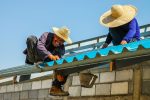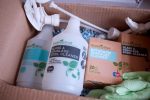How do you make a bed sustainable?
When it comes to reducing your carbon footprint, the easiest way is to look at how the products you intend to buy are made.
Certain materials have high methane emissions from manufacturing and emit toxic gases (like PVC), while others have high carbon emissions (steel).
With beds, emissions are related to the electricity, heat and transport used to manufacture them, and there are a few things that can make a bed sustainable.
This article will explore how sustainable beds are made and what to look for.
Why is sustainable manufacturing important?
Amid climate change talks, sustainability often gets lost in the mix, diluted as powerful people talk about burning coal and methane gas emissions.
But sustainability is key to tackling climate change because it will cut emissions in manufacturing, which contributes some 13.6% of global emissions after we take out emissions from iron and steel manufacturing. Add those to the mix, and the number grows to 24.2%, nearly a quarter of all global emissions!
Designing your bedroom to be more eco-friendly requires sustainable materials, and your bed is a great place to start.
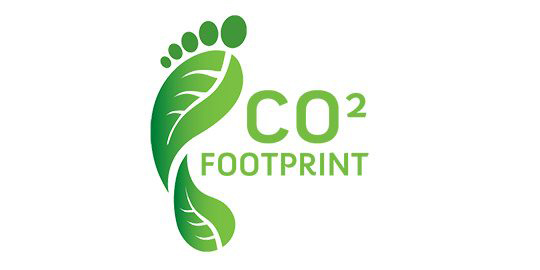
What makes a bed sustainable?
There are five components to a sustainable bed:
- Sustainable materials: Materials that have minimal impact on the environment. Replenishable resources like wood and recyclable materials like aluminium can continue to power manufacturing cycles without virgin materials.
- Reduced manufacturing complexity: The bed should be designed to use cutters, machines and labour that is free from complexities. Simpler designs require less intensive work, so they have lower carbon emissions by design.
- Minimised transport: Materials shouldn’t be shipped from China or anywhere else around the world. Sustainable manufacturing requires local materials to reduce supply chain complexity and carbon emissions in the process.
- Minimised waste: The material the bed is made from should be recyclable so that waste can be put straight back into the manufacturing cycle. Waste is also linked to good design, with good design reducing waste.
- Disposal and recycling services: Your old bed frame has to go somewhere, and the best place is a recycling centre. In our experience, recycling rates increase when the company delivering the bed recycles the old one.
Materials
Since the manufacturing supply chain is a complex beast, the easiest way to choose a more eco-friendly bed is by picking the right material.
Bed frames are made from either wood or aluminium. Both are sustainable materials but for different reasons, which we’ll look at now:
Aluminium
Aluminium is the most abundant material in the earth’s crust. It is easy to mine and easy to process, with significantly fewer emissions than steel and iron. Also, aluminium is infinitely recyclable, making it a great material for the environment!
For beds, aluminium is a great material. It’s strong, infinitely durable, doesn’t rust or corrode, and it looks fantastic. Different powder-coated finishes are available, from matte black to silver and pink.
The great thing about aluminium is 75% of all aluminium in production today is recycled, so it has a closed-loop manufacturing cycle.
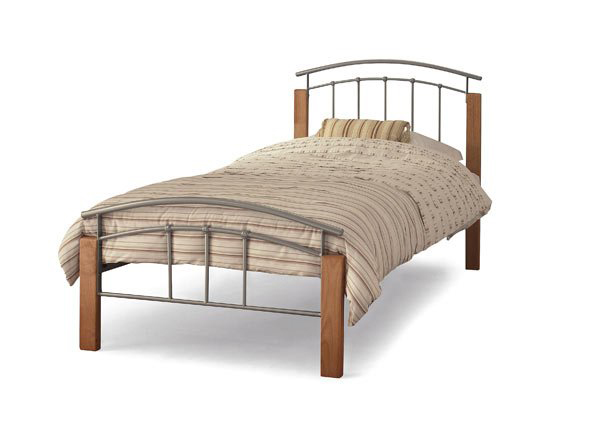
Timber
When properly managed, timber is a 100% sustainable material for bed frames and other products because it grows back. Additionally, the trees absorb CO2 during their life, bringing the total emissions associated with processing down.
With virgin woods, look for FSC certified timber – this will help you identify, purchase, and use wood that is sustainability sourced.
With engineered timber, look for recycled products. Today, most engineered timber is made from recycled wood, but some use virgin wood, which means they contribute to fresh emissions associated with timber manufacturing.
Natural wood veneer is also recyclable, although cheaper veneers tend to incorporate non-recyclable plastics like vinyl. So, when looking at beds with a veneer frame (these are often a cheaper option), look for a natural veneer.
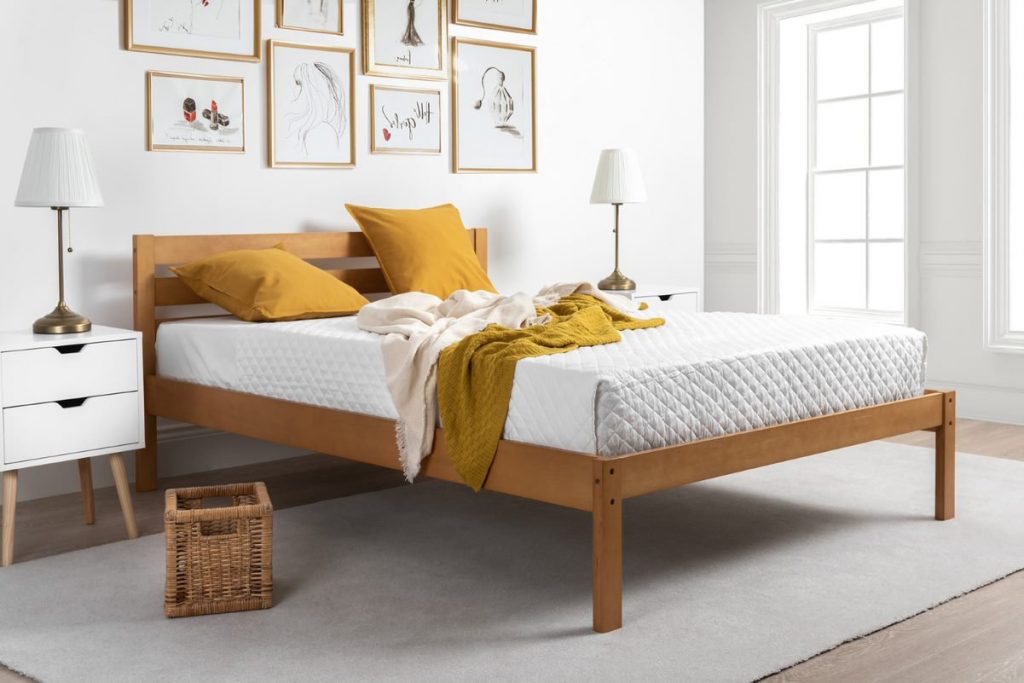
Available from Bedstar The Online Bed Superstore
One last thing
Divan beds are upholstered. The most sustainable upholstery is cotton because cotton is a natural, renewable, recyclable resource. Polyester is another option, but it’s synthetic (although also recyclable). Faux leather is made from polyurethane (synthetic plastic), which must be recycled because it contains petrochemicals.

![[AD] We’re a cricket-mad family, so we’re buzzing that @thehundred is back this August! 🏏🔥
To get ready, M tried out the official FREE Activity Pack — and it’s brilliant! 🙌
Packed with fun games, creative challenges and sporty tasks, it’s perfect for getting kids hyped whether you’re at home or on the go.
👉Download yours now (link in bio)
@londonspirit @ovalinvincibles #EveryMomentCounts #TheHundred
#EnglandCricket #CricketFamily #TheHundredCricket #LondonBloggers #Cricket #CricketIsLife #kidsfun](https://suburban-mum.com/wp-content/uploads/2022/11/505472555_18531279601016840_7092520074819907569_n-180x320.jpg)



![[AD - Press visit]
We enjoyed the glorious sunshine this weekend with a trip to Brighton. We went on the @brightoni360official which is right by the sea front.
The i360 pod take a slow journey up, allowing you to take in views across Brighton and the South Downs 450ft above ground. There’s a bar inside with drinks and snacks available to purchase and the experience lasts 25 minutes.
Afterwards, we headed to the open air roller rink for a roller skating session!
The roller rink is:
⭐ Suitable for over 5s
⭐ £6.50 if you have your own skates or £9.50 if you need to hire them
⭐ 45 minutes per session
Full details to visit the i360 + skating
📍 Brighton i360, Lower Kings Road, Brighton BN1 2LN
🚗 Parking nearby (we parked in the Regency Square Car park)
🎟️ Prices start from £25.40 for an adult and £16.90 for a child
🕐 Opening hours are currently Sun-Fri 10.30am-18.30pm and until 19.30pm on Saturdays
☕️ Bar inside the i360, cafe and gift shop
Book tickets here:
https://tickets.brightoni360.co.uk/tickets/?_ga=2.195305772.1869001490.1689671753-1757164059.1689671753/#events?eventid=157](https://suburban-mum.com/wp-content/uploads/2015/04/417980235_313576471048632_3682382982231216432_n.jpg)

![[AD] ***Summer of fun at Barracudas Activity Camps!****
There is plenty for kids to do at @barracudas_activity_day_camps
From Tennis, Archery, Swimming, Motor Sports and more you can be sure that there will be something for kids aged 4.5-14. ⚽🏈🥅🎾🏓🏎️🏹🏊♂️🏉
You can book on a day by day basis - so it can fit in with any other days out/activities you have planned and there are early drop off and late pickup options available. Barracudas are also Ofsted registered so you can use your Childcare Vouchers too.
⭐⭐⭐Get £20 off a week or £4 off a day using my discount code: MARIA20⭐⭐⭐
#BarracudasActivityDayCamp #BarracudasActivityCamp #BarracudaAmbassadors #SummerHolidays #SchoolHolidays #Summer2023 #SummerCamp #DayCare #Camp #KidsCamp #surreymummy #surreymums #SummerOfFun #ActivityCamps #HolidayCamps #Childcare #SchoolHolidays #schoolholidaycamps](https://suburban-mum.com/wp-content/uploads/2024/07/353583570_625625966167953_545896259645102575_n.jpg)



![[AD] We have some super exciting news...we have been chosen to be Laser Quest Ambassadors, and the boys are over the moon!
We are really lucky that our local Laser Quest (@laserquestkingston) is just around the corner from us. It means we can pop in of a weekend or anytime during the school holidays, and with summer just around the corner, I know Laser Quest will be one of our go-to places for some family fun.
As well as games of Laser Quest, there are also VR experiences and arcade amusements too. To find out a bit more about how Laser Quest works, you can read my blog post: https://www.suburban-mum.com/laser-quest-kingston/ (clickable link in bio)
Don't forget to keep an eye out for our Laser Quest posts - I'm going to be giving away two family passes to use at Laserquest Kingston!
If you can't wait and want to head down to Laser Quest to try it out, use the code SUMMER30 for 30% off your booking. The code is valid from now until the end of August 2023 and can be used on Laser Quest games and birthday party bookings.
#LaserquestAmbassador #Laserquest #LaserquestKingston #ActivitiesForKids #FamilyFun #DaysOutWithKids #Lasertag #LaserquestVR #Kingston #ThingsToDoInKingston #SurreyFamilyDaysOut #ThingsToDoWithKids #RainyDayFun #SurreyMummy #SurreyLife #LifeWithKids #LifeWithBoys #familyfunday](https://suburban-mum.com/wp-content/uploads/2015/04/353230107_797358078406942_2405522556733455165_n.jpg)

![[AD] The sun has finally made an appearance and the boys have been making the most of it by spending it
in the garden.
They’re go-to is always football and they’ve been trying to improve their aim and accuracy with the new Messi Foldable Footlball goal from the #MessiTrainingSystem range.
I love the fact the goal is foldable, making it easy to store away when not in use. It is also lightweight so you can effortlessly pack it up and take it to the park or to a friend’s house.
The Messi Foldable Football Goal retails at £36 and can be purchased from @argos
You can read my full review here: https://www.suburban-mum.com/messi-foldable-football-goal/
#TrainLikeMessi #FoldableFootballGoal #FootballSkills #OutdoorFun #LionelMessi #LeoMessi #FootballAtHome #OutdoorKids #JustGetOutside #OutdoorsAndFree #ScreenFreeKids #WhateverTheWeatherKids @flair_gp](https://suburban-mum.com/wp-content/uploads/2015/04/341194882_615024710178056_41977149395989448_n.jpg)

![[AD] We are absolutely thrilled to announce that we are Barracuda Ambassadors again this year.
With Easter just around the corner, the boys were sent the @barracudas_activity_day_camps new camp kit in preparation for the school holidays.
There’s a wide range of activities for kids aged 4.5 - 14 including Tennis, Archery, Basketball, Arts & Crafts and more.
If you like the sound of Barracudas, find out more over on their website. You can also save £20 a week or £4 a day, using my discount code: MARIA20](https://suburban-mum.com/wp-content/uploads/2024/07/336812306_765234558514317_685553691647241974_n.jpg)


![[AD - Gifted]
Last weekend we were invited to try out @tsarettaspice’s new Bottomless Brunch menu and I can tell you it was thumbs up all round!
There’s a good choice tapas on offer from Punjabi fish fingers, Indo Chinese Chicken to Spiced Lamb Scotch Eggs and Manchurian Cauliflower (which was amazing!)
If you’re local to Twickenham and fancy giving them a try here’s are the details.
Tsaretta Spice Bottomless Brunch
⭐️£37.50 per head for bottomless Prosecco or cocktail of the day
⭐️£55 per head for bottomless Champagne
⭐️ Food included: 4 tapas selections and dessert or 2 tapas selections, a pav or naanwich and dessert
⭐️ Non-alcohol brunch is also available
Tsaretta Spice
55 Church Street
Twickenham
TW1 3NR
You can also read our full review over on the blog (link in bio)](https://suburban-mum.com/wp-content/uploads/2024/07/334565436_5960402314015030_663031098700829518_n.jpg)
![[AD] What does family look like for you?
I am fortunate to be surrounded by strong, powerful women in the form of my mum, sister and mother-in-law (along with many others). With Mother’s Day just around the corner, @BootsUK want to celebrate all the different mums and mother figures we are lucky enough to have in our lives. They have a huge range of Mother’s Day gifts to choose from so we can show them how much they mean to us. (swipe to take a look at some of my choices)
If you want to express love and appreciation for the mother figure(s) in your life, head to Boots.com to find the ideal gift. They have a whole host of gifts, so you can be sure to find something to suit all tastes. Celebrate the #LoveForAllMums this Mother’s Day with Boots.
](https://suburban-mum.com/wp-content/uploads/2015/04/334276459_136658625736352_6403224988403337253_n.jpg)
